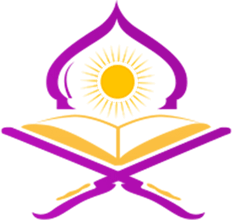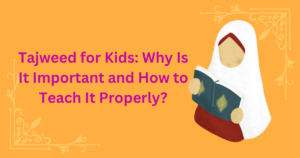In this blog post, we will explore the meaning of Qalqalah, identify its letters in Arabic, delve into its rules and types, provide examples from the Quran, and highlight common mistakes to avoid.
Qalqalah is a fundamental concept in the field of Tajweed, which plays a significant role in reciting the Quran correctly and beautifully. So, let’s delve into this fascinating aspect of Tajweed and unlock the beauty of proper Quranic recitation!
Table of Contents
What is Qalqalah?
Qalqalah is a phonetic concept in Tajweed, the rules of proper Quranic recitation. The term “Qalqalah” literally translates to “echo” or “reverberation” in Arabic.
Qalqalah refers to the echoing or shaking sound produced when certain letters are pronounced with Sukoon, which indicates no vowel sound.
Purpose of Qalqalah:
Qalqalah adds emphasis and clarity to specific letters in the recitation of the Quran. Its purpose is not just to ensure correct pronunciation but also to enhance the beauty and rhythm of the recitation. By adding a subtle bouncing effect, Qalqalah brings life and resonance into the verses of the Quran.
Significance of Qalqalah for Reciters:
It is crucial to understand and implement the rules of Qalqalah for accurate and beautiful recitation of the Quran.
This contributes to a melodic flow and proper articulation of words, resulting in a more harmonious and captivating recitation.
Mastery of the concept of Qalqalah enhances the experience of learning Tajweed and deepens understanding of the Arabic language.
Mastering the pronunciation of Arabic letters with Tajweed improves the melodic flow and proper articulation of words, resulting in a more captivating and profound experience with sacred scripture.
Qalqalah Letters in Arabic
Qalqalah refers to a vocalization technique used in Tajweed. It involves creating an echoing effect when pronouncing certain consonants within a word. Five Qalqalah letters in Arabic are specifically associated with this technique:
1. ق (Qaf):
When pronounced with Sukoon (a diacritic indicating the absence of a vowel sound), it produces an echoing effect. Examples include the words “مقْمحون” (maqmuhoon).
2. ط (Ta):
This letter is considered the strongest Qalqalah letter. When pronounced with Sukoon, it also creates an echoing effect. For instance, the words “نطْفة” (natafah) demonstrate this.
3. ب (Ba):
Qalqalah in the letter ب results in a light bouncing sound when spoken with Sukoon. Examples include words like “يبْصرون” (yabṣaroon).
4. ج (Jeem):
Similar to ب, the letter ج produces a slight bounce when pronounced with Sukoon. Examples include words like “أجْر” (ajr).
5. د (Dal):
When pronounced with Sukoon, the letter د vibrates slightly as it is spoken. An example is the word “لقدْ” (laqad).
Conditions for Qalqalah Letters
To create the echoing or shaking sound associated with Qalqalah, the following conditions must be met:
1. When a Qalqalah letter has a vowel (such as fatha, kasra, dummah, or tanween) on it, it does not produce an echoing or shaking sound.
2. Qalqalah only occurs when the Qalqalah letters appear with Sukoon, indicating no vowel sound.
Reason for Qalqalah in Specific Letters:
The reason behind the occurrence of Qalqalah in these specific letters lies in their combination of loudness and intensity.
The loudness characteristic hinders the flow of breath, while the intensity attribute obstructs the flow of sound.
Consequently, pronouncing these letters effectively becomes challenging. Thus, following a light voice helps in producing accurate pronunciation.
By familiarizing yourself with these Qalqalah letters and practicing the pronunciation of Tajweed Rules for Heavy and Light Letters, you can elevate your recitation skills and deeply appreciate the musicality of Quranic verses.
Rules of Qalqalah in Tajweed
Understanding the rules of Qalqalah is essential for proper pronunciation and recitation. Here are the rules of Qalqalah in Tajweed:
1. Qalqalah occurs when one of the five Qalqalah letters (ق, ط, ب, ج, د) appears with a Sukoon (no vowel sound).
2. The intensity of Qalqalah differs based on the strength of the letter: Ta/ط has the strongest Qalqalah, while Qaf/ق, Baa’/ب, Jim/ج, and Dal/د exhibit progressively lighter Qalqalah.
3. When a Qalqalah letter is followed by another letter, the echoing or shaking effect is more pronounced.
4. Qalqalah does not occur if the Qalqalah letter has a vowel (fatha, kasra, dummah, or tanween) on it.
5. If a Qalqalah letter with a Sukoon is followed by another letter with a Sukoon, the Qalqalah is prolonged.
6. A Qalqalah letter with a shaddah (double consonant) produces a longer echo or shaking effect.
7. When two Qalqalah letters come together, the shaking effect is combined, intensifying the echoing sound.
8. It is important to maintain proper articulation and clarity while pronouncing the Qalqalah letters to ensure the correct application of Tajweed principles.
By following the rules of Qalqalah in Tajweed, you can enhance your Quranic recitation skills and ensure accurate pronunciation according to Islamic guidelines.
Types of Qalqalah in Tajweed
Qalqalah is a crucial aspect of Tajweed, the proper recitation of the Quran. Understanding the different types of Qalqalah is essential for mastering this beautiful art. Let’s explore the various types below:
1. Qalqalah Kubra (The Strongest Qalqalah):
Qalqalah Kubra refers to the strongest type of Qalqalah. It occurs when one of the five letters (ق ط ب ج د) comes at the end of a verse and is accompanied by a Shaddah.
When encountering Qalqalah Kubra, the reader should stop at the last letter without connecting it to the following word and echo the sound of the letter.
It’s important not to add extra letters or gestures in place of the Qalqalah. An example of Qalqalah Kubra is the word الحقُّ.
2. Qalqalah Wusta (Middle Qalqalah):
Qalqalah Wusta, also known as the Middle Qalqalah, occurs at the end of a word in the middle of a verse. This happens when the Qalqalah letter is at the end of the word, but there is no Shaddah.
The reader should make a stop on the word. An example of Qalqalah Wusta is the word العذاب. These words are read with the middle voice of Qalqalah because they are in the middle of the verse.
3. Qalqalah Sughra (Light Qalqalah):
Qalqalah Sughra also referred to as the Light Qalqalah, can occur at the beginning, middle, or end of a word.
Unlike the other types of Qalqalah, it does not require a specific position within the verse. An example of Qalqalah Sughra is the word أفتطْمعون.
Give your child the gift of mastering the language of the Quran with Bayan Al-Quran. Enroll now and watch your child’s Arabic skills soar in our online Arabic course for kids!
Examples of Qalqalah in the Quran (write 2 lines introduction and the Examples in Bullet Points)
In the Quran, there are several examples where Qalqalah is utilized, which adds a unique element to the recitation. Let’s clarify each example:
1. Example of the Qaf letter in the Quran:
The word “مُّقْمَحُونَ” in the verse {إِنَّا جَعَلْنَا فِي أَعْنَاقِهِمْ أَغْلالاً فَهِيَ إِلَى الأَذْقَانِ فَهُم مُّقْمَحُونَ}. This word showcases the Qalqalah effect on the end of the letter Qaf.
2. Example of the Taa letter in the Quran::
The word “نُّطْفَةٍ” in the verse {أَوَلَمْ يَرَ الإِنسَانُ أَنَّا خَلَقْنَاهُ مِن نُّطْفَةٍ فَإِذَا هُوَ خَصِيمٌ مُّبِينٌ}. Here, the Qalqalah effect is heard on the end of the letter Taa.
3. Example of the Baa letter in the Quran::
The word “وَاضْرِبْ” in the verse {وَاضْرِبْ لَهُم مَّثَلاً أَصْحَابَ الْقَرْيَةِ إِذْ جَاءَهَا الْمُرْسَلُونَ}. The Qalqalah effect can be observed on the end of the letter Baa.
4. Example of the Jeem letter in the Quran::
The word “تَجْرِي” in the verse {وَالشَّمْسُ تَجْرِي لِمُسْتَقَرٍّ لَّهَا ذَلِكَ تَقْدِيرُ الْعَزِيزِ الْعَلِيمِ}. This verse highlights the Qalqalah effect on the end of the letter Jeem.
5. Example of the Dal letter in the Quran::
The word “لَقَدْ” in the verse {لَقَدْ حَقَّ الْقَوْلُ عَلَى أَكْثَرِهِمْ فَهُمْ لا يُؤْمِنُونَ}. Qalqalah is heard at the end of the letter Dal in this example.
Improve your recitation and perfect your tajweed skills with our expertly designed Noorani Qaida program at Bayan Al-Quran.
Common Mistakes When Applying Qalqalah in Tajweed
When it comes to producing the sound of Qalqalah, there are several common mistakes that learners often make. Let’s take a closer look at these mistakes:
1. Adding a Dummah, Kasrah, or Fatha:
One mistake learners make is adding a vowel (Dummah, Kasrah, or Fatha) to the Qalqalah letters. This leads to the addition of a Harakah (vowel) that does not exist in the Quran.
For example, when reciting “قل أعوذ برب الفلق,” one should avoid adding a Fatha to the ق when making the sound of Qalqalah in the word “الفلق”.
2. Adding the sound of Hamza:
Another common mistake is adding the sound of Hamza at the end of Qalqalah. This results in the addition of a letter that is not present in the Quranic text.
When reciting “إن هذا لشيء عجاب,” one should not add a Hamza after the Qalqalah sound in the word “عجاب.”
3. Stretching or lengthening the Qalqalah sound:
It is important to note that the echoing sound of Qalqalah is meant to be short and not prolonged. Learners should avoid stretching or lengthening the Qalqalah letters.
4. Creating a pause after Qalqalah:
Some teaching methods may emphasize the sound of Qalqalah by creating a short pause after it. However, it is essential to understand that this pause is not required.
For example, when reciting “عند سدرة المنتهى,” one should not pause after the Qalqalah sound that accompanies the د in the word “سدرة.”
Help your child become a proficient Quran reciter through our Online Tajweed and Quran Classes at Bayan Al-Quran Academy!
If you or your child are interested in learning more about Tajweed and the Quran, consider enrolling in online Quran classes for kids at Bayan Al-Quran Academy. Our experienced teachers provide comprehensive guidance in mastering Tajweed skills along with Quranic memorization techniques.
With our interactive lessons and personalized attention, students can develop a deep understanding of aspects of Tajweed while building a strong connection with the Holy Quran. Don’t miss out on this opportunity to enrich your knowledge and establish a solid foundation in Quran recitation. Enroll now at Bayan Al-Quran Academy!
Conclusion
By understanding the meaning, letters, rules, types, and examples of Qalqalah in the Quran, we can improve our recitation skills and develop a deeper connection with the words of Allah. Remember to practice regularly and seek guidance from knowledgeable teachers or online Quran classes such as those offered at Bayan Al-Quran Academy. With dedication and effort, you can master Qalqalah and enhance your overall recitation proficiency.




















